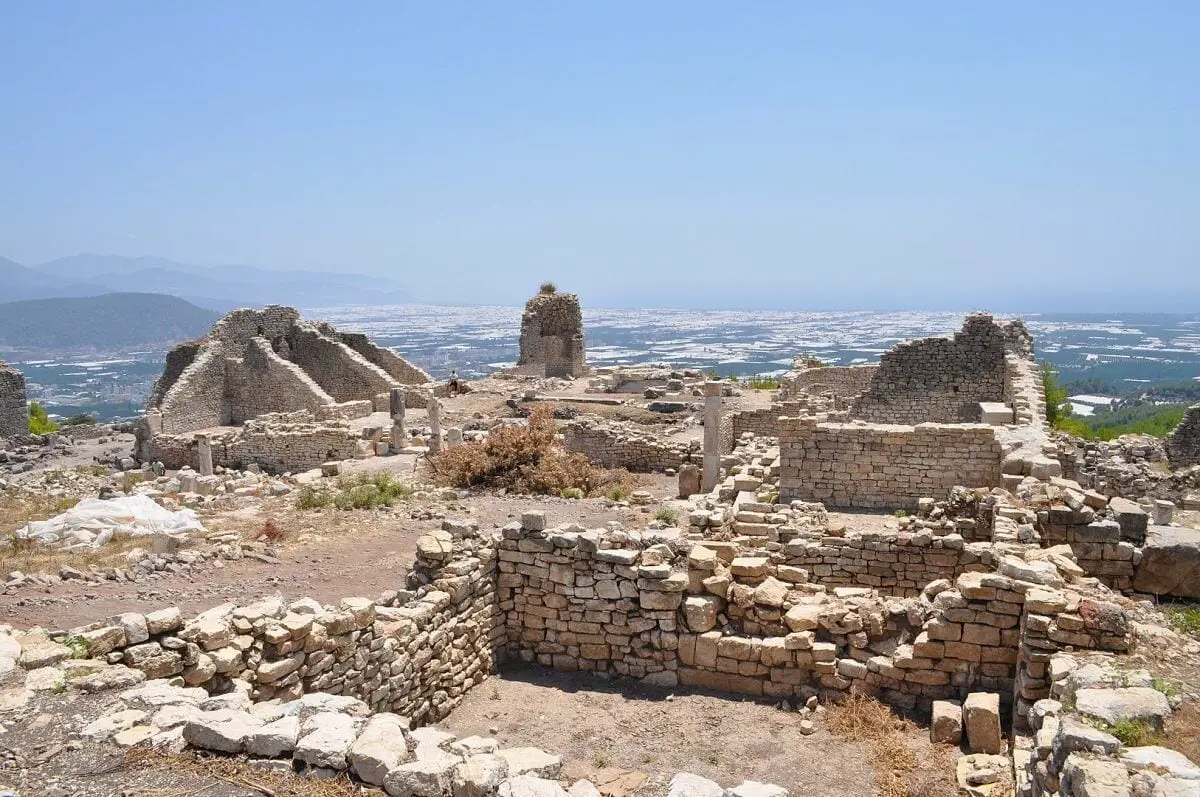Inscriptions tell us, that throughout history people always complained about the high taxes charged by the central government.
The Roman Empire has produced a number of inscriptions that record these complaints, one of the best-preserved and most revealing was found in the Roman City of Rhodiapolis.
The Roman city of Rhodiapolis, which is sited in Turkey has a long and varied history. Excavations on the site were started by Professor Nevzat Çevik, head of the archaeology department in Akdeniz University’s 2006 after the site was exposed during wildfires in 2000.
Located near the village of Sarıcasu, Rhodiapolis received its name from the Rhodians, who colonised the city.
The best-known figure from the city was Opramoas, who lived in the period of Antoninus Pius (138-161 A.D.). He was the richest man in Lycia and the most renowned philanthropist.
Most of the visible ruins in the ancient city date from the Roman and Byzantine periods. The remains included a theatre, a bathhouse, a public forum, temples, a church, cisterns, a cenotaph (a statue commemorating the dead), a necropolis (a structure for graves) and houses.
One of the most interesting discoveries concerned the taxation of the people of Rhodiapolis, which was recorded in an ancient inscription.
The inscription was written on a stone and erected as a stele in the agora. It describes the complaints of high income and sales taxes by the citizens of the city and a petition to the Emperor Septimius Severus for relief from the burden being imposed.
Emperor Septimius Severus replied to the petition and surprisingly promised to lower taxes. This was very unusual, especially when you consider that the Emperor was funding his military campaigns during this period.
The inscription records that on his return to Rhodiapolis, the messenger informed the leader with great joy, and in honour of the message and the messenger, an inscribed stele was erected in the agora.
Unrest over taxes was not unusual in the Roman Empire. In the 3rd Century, it was a major cause of civil strife, dissatisfaction, and in some cases revolt.
ZOSIMUS, A LATE 5TH CENTURY WRITER TELLS US “AS A RESULT OF THIS EXACTION OF TAXES, CITY AND COUNTRYSIDE WERE FULL OF LAMENTS AND COMPLAINTS, AND ALL… SOUGHT THE HELP OF THE BARBARIANS.”
Many Roman peasants even fought alongside their invaders when they laid waste to the empire in the 3rd and 4th century. This was the case when Balkan miners defected to the Visigoths en masse in 378. Others simply vacated the Empire altogether to avoid the crippling tax rates along with the debasing of the sliver currency which was devastating for the Empires economy.
In fact, by the end of the 3rd century, the situation had become so dire that Emperor Diocletian had no choice but to introduce pricing and taxation reforms. These included a universal price freeze, capping maximum prices, while at the same time it reinstated the land tax on Italian landowners which had been done away with in 167BC. Special tolls on money traders and companies were also imposed to help increase the tax collections.
The tax reforms were so rigid and unwavering that many people were driven to starvation and bankruptcy. The state went so far as to chase widows and children without restraint for taxes owed.
WHEN WE LOOK AT THE SPENDING, WE SEE THE IMPERIAL GOVERNMENT WAS SPENDING THE MAJORITY OF THE TAXES ON BOTH THE MILITARY OR FREE BREAD AND ENTERTAINMENT FOR THE POOR. ACCORDING TO HISTORIAN JOSEPH TAINTER, “THOSE WHO LIVED OFF THE TREASURY WERE MORE NUMEROUS THAN THOSE PAYING INTO IT.”
In a paper called “The Size of the Economy and the Distribution of Income in the Roman Empire”, published in the Journal of Roman Studies in 2009, Walter Scheidel and Steven Friesen estimate the size and distribution of the Roman economy and tax system.
They concluded that in the Roman Empire as a whole, they had a middle class of somewhere around 6 to 12% of the population that controlled about 20% of the income generated within the empire. Just over 1.5% of the population controlled 15-25 percent of the income of the empire. In addition, close to 10% took in another 15 to 25%, leaving not much more than half of all income for all remaining households.
While the taxation rate of the Empire was low, at around 5-7% the large number of people who did not pay it meant the compliant taxpayers in Rhodiapolis had to pay more.
This would have been very apparent in more rural and less developed regions like Rhodiapolis where the citizens were having to subsides the failure of others to pay their fair share. This would have been enforced with vigor by the hated imperial tax-collectors and other intermediaries, showing no pity or remorse in ensuring that the taxes were collected in full from each region.
Written by Diarmaid Walshe
Header Image – Rhodiapolis – Image Credit :





